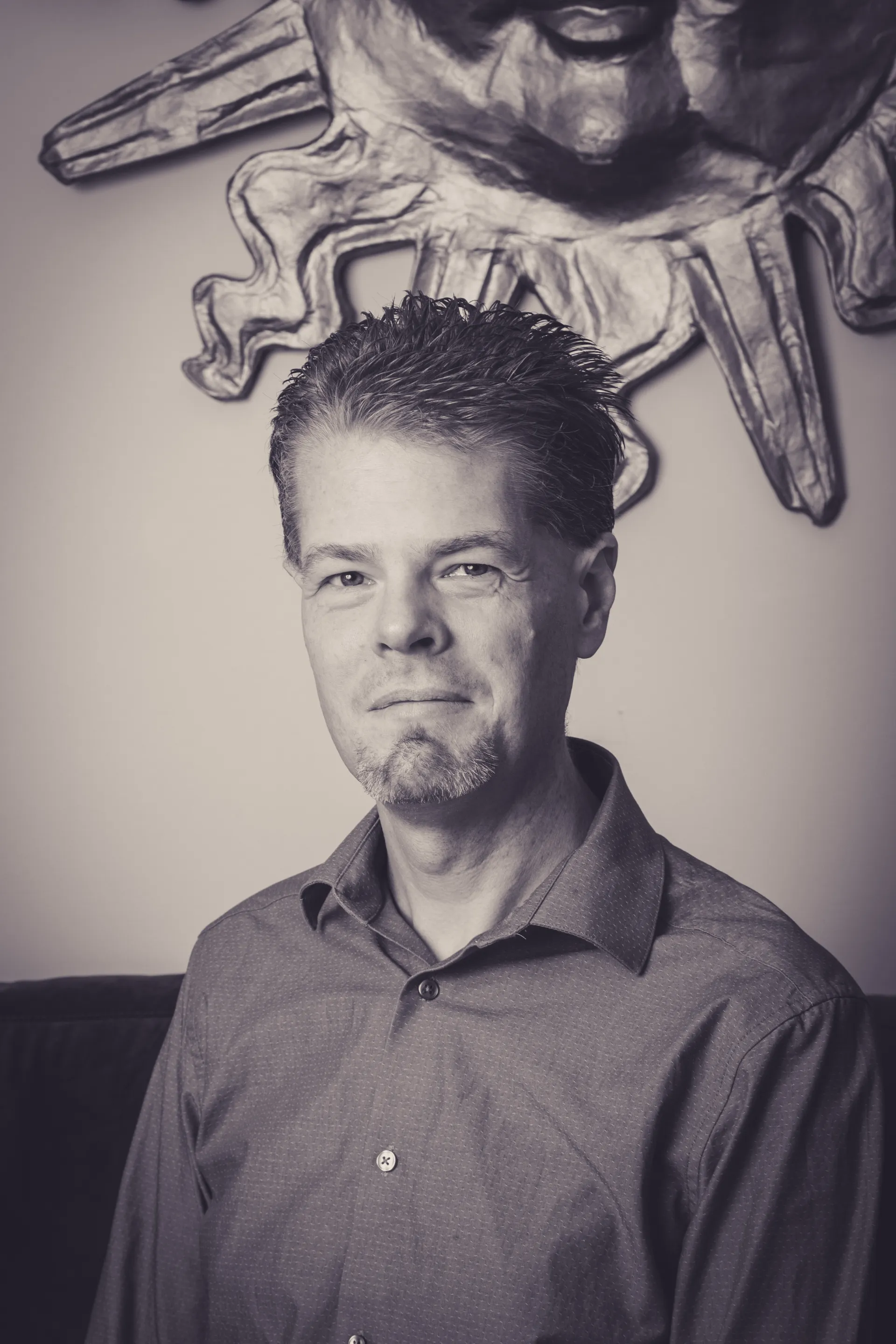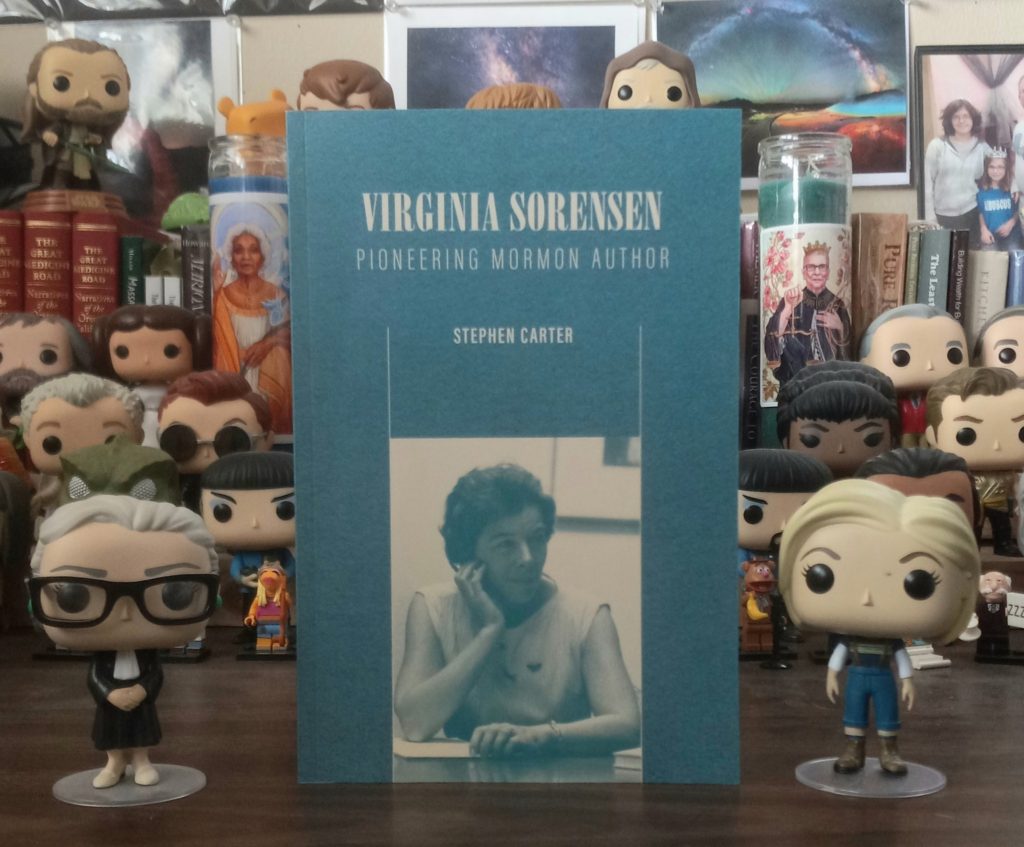THE FOLLOWING is a guest post by Stephen Carter, editor of Sunstone and author of the new book Virginia Sorensen: Pioneering Mormon Author (Signature Books).
Why Do Both Mormons and Post-Mormons Love Virginia Sorensen?
Well, the headline above was not always the case. Mostly because Mormons never got the chance to read Virginia Sorensen’s novels when they were first published.
This was weird; because her books, published mostly in the 1940s and 50s, portrayed Mormons very sympathetically. Before then, most novels portrayed Mormons as maiden-stealing, wagon-train-attacking, Danite-loving zealots. Virginia was a real improvement over just about anything that had come before.
But the problem was she portrayed post-Mormons very sympathetically, too.
That’s her hallmark. Virginia is intimately connected to all the characters in her books, which means that, soon enough, the reader is too. It’s one of the great pleasures of reading her work.
But back when they were published, Mormonism was working its way up in American society while still trying to retain its identity, so it didn’t have any room for post-Mormons at the time. Virginia’s novels only showed up once in an LDS Church publication: the book review section of the Improvement Era, where apostle John A. Widstoe admitted that she had some promise but mostly dismissed her novel. (Just think about that. An apostle writing book reviews! About fiction! It was another age.)
The fact is, Virginia was way ahead of her time. We’ve only started being able to appreciate her genius during the past decade or so. With the advent of the Internet, every Mormon is only a podcast episode or an article away from heading into a faith crisis. And often, those crises lead them out of the Church. I’d say every American Mormon is closely connected to someone who has recently left the Church, whether it be a family member or a friend.
So, nowadays, both Mormons and post-Mormons are very aware of each other and very close. We are bewildered by each other, but we also know the other’s heart enough that we can’t just dismiss one another.
And that’s where Virginia comes in. She wrote novels about people living in small Mormon towns around the beginning of the 20th century, but the things her characters wrestle with seem ripped straight from a Mormon subReddit. She brings us deep into the beauties and tragedies of both faith and doubt. And rather than encouraging us to judge her characters, she shows us pieces of ourselves in them. And the astonishing thing is, she succeeds. The orthodox Mormon reader sees the beauties of their faith and perhaps even discovers new dimensions of it, but they also empathize with the post-Mormon characters, understanding that they have gotten to where they are honestly and that they have found something compelling beyond the bounds of religion. Meanwhile, the post-Mormon reader remembers the beauties of their former religion, watches their journey out of Mormonism with new eyes, relishes what they have found, and begins to see the subtle ways they still retain pieces of faith.
Virginia could write such extraordinary novels because she grew up in such extraordinary circumstances. She spent her formative years in Manti, Utah, raised by a Christian Scientist mother, a Jack-Mormon father, and a post-Mormon grandmother. But she was a faithful churchgoer, attended BYU, and got married in the temple. Then, during adulthood, she drifted out of church activity and eventually joined the Anglican Church. So, she inhabited many worlds. And she brings them all together in her novels.
Two of her novels are available as ebooks from Signature. If you want to experience the things I’ve been writing about here, read Where Nothing Is Long Ago first. Then, when Signature releases The Evening and the Morning (they’ve promised me it’s on the way), read that. I promise you will come out of them with an enriched view of faith, doubt, and love, no matter where you fall on the belief spectrum.
 Stephen Carter is a three-time winner of an Association for Mormon Letters Award: once for his personal essay “The Calling,” once for iPlates: Prophets, Priests, Rebels, and Kings (a graphic novel adaptation of Mosiah chapters from the Book of Mormon, co-authored and illustrated by Jett Atwood), and once for Moth & Rust: Mormon Encounters with Death (Signature Books, 2017), which he compiled and edited. He is director of publications for the Sunstone Education Foundation and has a PhD in narrative studies. He lives with his family in Orem, Utah.
Stephen Carter is a three-time winner of an Association for Mormon Letters Award: once for his personal essay “The Calling,” once for iPlates: Prophets, Priests, Rebels, and Kings (a graphic novel adaptation of Mosiah chapters from the Book of Mormon, co-authored and illustrated by Jett Atwood), and once for Moth & Rust: Mormon Encounters with Death (Signature Books, 2017), which he compiled and edited. He is director of publications for the Sunstone Education Foundation and has a PhD in narrative studies. He lives with his family in Orem, Utah.

